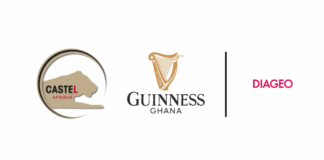By Jacob AZAARE (Ph.D.)
Reports from the World Health Organization (WHO, 2017), indicates that road traffic injuries cause the deaths of over 1.3 million road users between the ages of fifteen and twenty-nine every year (1, 2).
Also, road traffic accidents have been estimated to be one of the leading causes of death among road users in most countries around the globe (1, 2).
With the continuous increase in the number of automobiles and advancement in technology, there is the need to introduce a robust system of monitoring the behaviors of drivers on the roads for proper ratemaking to have far reaching importance of deterring policyholders from reckless driving (5, 6).
With the evolution of approaching new problems using modern technologies, the role of telematics in determining insurance claims through the monitoring of policyholder’s behaviors on roads cannot be underrated (5, 7,10,11).
Globally, most auto insurers have begun implementing telematics to track policyholders’ exposure to risk with regards to their driving behaviors, distances covered, locations and driving conditions (8). These information help insurers in making decisions on how to ensure safe driving and in making better insurance rates. Also, technological advancement has made it easier for insurers to track policyholders’ behaviors on the roads-speed, braking, acceleration, type of roads used and cornering (8).
Prior to the inception of telematics, classical ratemaking variables such as policyholders age, type of car, years of experience in driving, gender, etc., were used in determining auto insurance premiums (5, 7). However, these traditional metrics known as priors for classifying policyholders’ premium do not completely reflect their risk on the road (5, 6, 18) and, are therefore insignificant in classifying claims (18). Furthermore, employing these classical variables, policyholders’ driving behaviors are difficult to determine by insurers even with modern computational techniques.
In Ghana, unlike most advanced countries where telematics data are employed in auto insurance ratemaking, insurance premiums are calculated based on the above criticized variables such as policyholders age, experience, gender, auto type, etc… (3). Thus, (3, 6,) posits that these parameters for determining insurance premiums to justify claims classification does not properly give accounts on insured driving habits on the road. Consequently, ascertaining and monitoring the risk associated with policyholder’s usage and behaviors on the roads is quite challenging.
As a result, Ghanaian auto insurers in validating claims payment primarily rely on their investigative teams and eye witnesses coupled with police reports to unravel the real cause of accidents after they had occurred (6). Hence, this article highlights the significance of telematics in assisting Ghanaian auto insurers by providing data pertaining to road traffic for accurate and fair insurance pricing and claims payment.
The term “Telematics” was coined from the combination of “Telecommunication” and “Informatics”, which is used to describe a wireless transmission of vehicles information (1, 7). With the aid of telematics devices such black box, accelerators, smart phones, and global positioning systems (GPSs) insurers are able to collect vital information pertaining to policyholders’ driving habits (5).
Telematics ratemaking is therefore the act of determining the premium of insurance policies based on the information collected from telematics systems (4, 8). The significance of it adoption in auto insurance premiums computation is grounded in its ability to gather real-time traffic data.
Thus, its application in auto insurance is largely based on the usage-based insurance which includes pay-how-you-drive (PHYD), and pay-as-you-drive (PAYD). These principles of classifying claims truly resonates with policyholders’ driving habits and behaviors, policyholders’ driving styles with respect to braking, cornering, speeding and parking skills (9). However, pay-as-you-drive (PAYD) is more concerned with the insured’s driving habits be it, how long the insured has been driving, the time of day and the distance covered (14).
As posited, currently in Ghana, auto insurance pricing is solely based on traditional risk factors such as features of the insured vehicle, the policyholder’s age, gender, driving experience etc…(5, 7, 9). However, these risk factors have indirect impact the actual driving risk hence making premiums computations inaccurate (16,18). Also, the current ratemaking does not reflect the true driving behaviors and habits of policyholders (17); it does not provide evidence of how the policyholder uses the vehicle on the road. That is to say, there is no information about the policyholder’s speeding, braking, making phone calls, cornering, traveling times and so on.
Hence, integration of Telematics into Ghana’s auto-insurance policy ratemaking will offer a dynamic measure to probe policyholders driving habits, times of the day of usage locations etc… for accurate premiums determination other than the traditional methods of estimating insurance premiums (5). In a broader sense, Telematics provides insurers with information regarding the policyholder’s speed on the road, kind of roads, time of day, phone usage, and cornering which aids in determining the exact cause of accidents (5, 8). The adoption of telematics technology in calculating vehicle insurance premium has made both pay-as-you-drive and pay-how-you-drive services attractive and appealing to insurers and policyholders (13).
As (13) postulates, usage-based insurance can significantly improve the accuracy in insurance pricing since it has stronger relationship with traffic accidents compared with the traditional risk factors method used currently in the Ghanaian auto insurance market. Contrary, (15) argues that information relating to policyholders travels should not be taken because of privacy laws. Additionally, (17) reechoed the findings of (15) particularly in the direction of not monitoring policyholders movement through telematics for more than 3 months or 4,0000 kilometers on the grounds that the information will be redundant and no longer worth keeping such records for longer duration.
However, notwithstanding the views of (15,17), drivers tend to be more cautious on the road when they know their driving behaviors are being monitored. Consequently, (14, 15) observed that auto insurance companies where premiums are calculated based on the usage-based-premium experienced a reduction of 1.6 percent reports of fatal accidents, which suggests that policyholders reduced their risk of traffic accidents by 50 percent. Also, a confirmatory study by (17) posits that safety driving can be heavily influenced by monitoring and as inferred by (14, 15), adopting telematics ratemaking in auto insurance would make driving safer.
Conclusively, telematics ratemaking is the new dawn in auto insurance ratemaking. It is informative for ratemaking and optimal for claims classification than the traditional risk factors approach which primarily depends on policyholders age, gender, nature of the vehicle and distance travelled and so on (8, 9). Results from 2024 have shown that usage-based insurance has reached 35 percent market share in the United States of America, which accounted for 1 percent of the country’s Gross Domestic Product (2, 17) and hence, there is a justifiable need to integrate telematics ratemaking into the Ghanaian auto insurance pricing to control claims frequency and to also fuel economic growth.
References:
- Machumu, W. U. J. (2018). The Social Implications of Road Accidents: A Case of Musoma Municipal Council(Doctoral dissertation, The Open University of Tanzania).
- Moore, J. (2020). Road traffic safety in Canada from 2003-2017(Doctoral dissertation, University of Split. School of Medicine. Forensic medicine).
- Azaare, J. (2025). Auto Insurance Pricing Model in Ghana. Insurance or Extortion? Business and Financial Times (Newspaper).
- Ziakopoulos, A., Petraki, V., Kontaxi, A., & Yannis, G. (2022). The transformation of the insurance industry and road safety by driver safety behaviour telematics. Case studies on transport policy, 10(4), 2271-2279.
- Arumugam, S., & Bhargavi, R. (2019). A survey on driving behavior analysis in usage -based insurance using big data. Journal of Big Data, 6(1), 1-21.
- Denhere, P. T., Denhere, J., Mutipforo, G., Katsande, C., Muzenda, A., Matanana, N., & Muridzi, G. (2024). Telematics as a Transformative Agent for the Zimbabwean Auto Insurance Ecosystem. Journal of Computer and Communications, 12(7), 39-58.
- Eling, M., & Kraft, M. (2020). The impact of telematics on the insurability of risks. The Journal of Risk Finance, 21(2), 77-109.
- Stroobants, N., & Van Schoubroeck, C. (2021). Telematics Insurance: Legal Concerns and Challenges in the EU Insurance Market. EJCCL, 13, 51.
- Peiris, H., Jeong, H., Kim, J. K., & Lee, H. (2024). Integration of traditional and telematics data for efficient insurance claims prediction. ASTIN Bulletin: The Journal of the IAA, 54(2), 263-279.
- Huang, Y., & Meng, S. (2019). Automobile insurance classification ratemaking based on telematics driving data. Decision Support Systems, 127, 113156.
- Faccio, M., & McConnell, J. J. (2018). Death by Pokémon GO: The economic and human cost of using apps while driving (Working Paper No. 24308). National Bureau of Economic Research.
- Jin, Y., & Vasserman, S. (2019). Buying data from consumers: The impact of monitoring programs in U.S. auto insurance [Unpublished manuscript]. Harvard University, Department of Economics.
- Hubbard, T. N. (2000). The demand for monitoring technologies: The case of trucking. Quarterly Journal of Economics, 115(2), 533–560.
- Smith, R. (2019). Usage-based insurance set for major growth: Report. Insurance Business America.https://www.insurancebusinessmag.com/us/news/technology/usagebased-insurance-set-for-major-growth–report-122609.aspx
- Reimers, I., & Shiller, B. R. (2019). The impacts of telematics on competition and consumer behavior in insurance. The Journal of Law and Economics, 62(4), 613–632.
- Litman, T. (1997). Distance-based vehicle insurance as a TDM strategy. Transportation Quarterly, 51(3), 119–138.
- Litman, T. (2005). Pay-as-you-drive pricing and insurance regulatory objectives. Journal of Insurance Regulation, 23(3), 35–53.
- Azaare, J., Zhao, W., and Ahia, B. N. K. (2022). Exploring the Effects of Classical Insurance Rating Variables on Premium Auto in ARDL: Is the high Policyholder’s Premium in Ghana Justified? SAGE Open, 12(4). https://doi.org/10.1177/21582440221134219.
- Palovuori, T. (2022). The analysis and use of motor vehicle telemetry data.
Author:
Dr. Jacob Azaare holds a Ph.D. in Management Science and Engineering, as well as a Master’s in Management Science and Engineering, both from the University of Electronic Science and Technology of China. He is a Senior Lecturer, Department of Business Computing, C. K. Tedam University of Technology and Applied Science, Navrongo. Jacob has a multidisciplinary research interest, including Financial Modelling and Insurance, Data Analytics, Financial Risk Management, Digital Marketing and E-governance.










